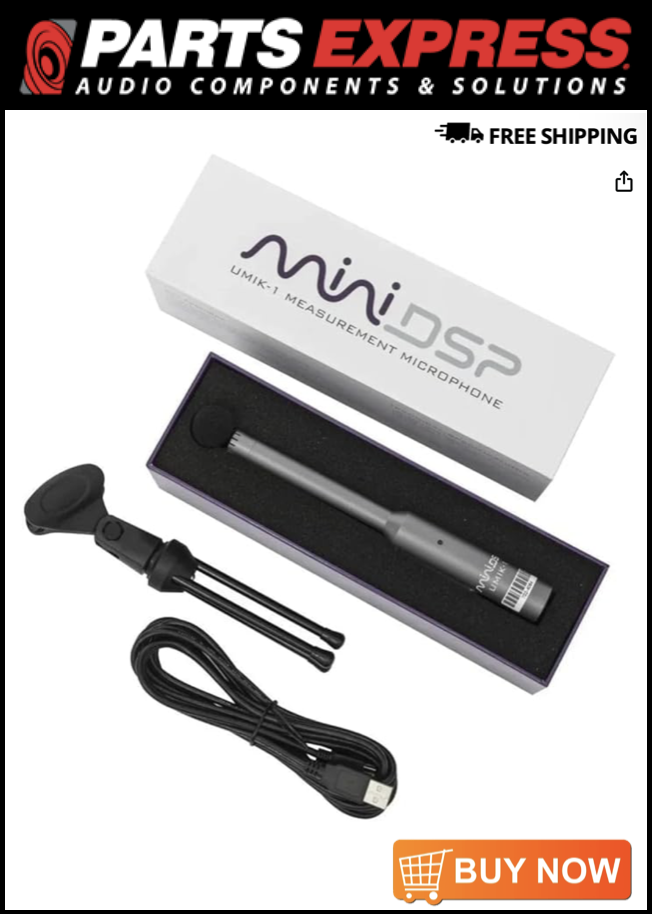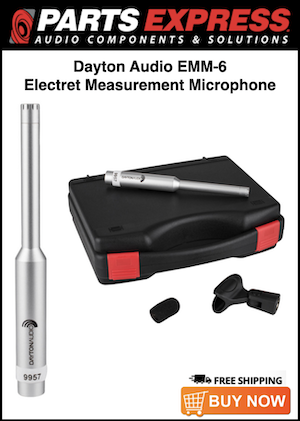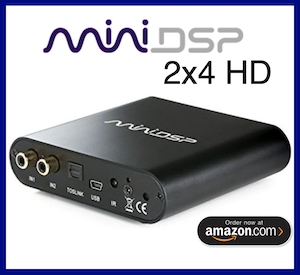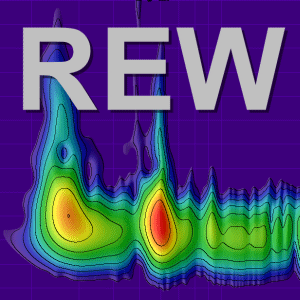ColdComfort
Registered
Hi All-
I'm new to REW, and have some questions. I'm helping a friend build out a mixing area around his DAW. He has a home studio that he periodically records bands performing in, and wants to improve his mixing by using studio monitors rather than headphones. I'd like for us to calibrate the monitors using REW, so characterizing them with a calibration mic with the ultimate goal of a monitor-appropriate target curve enabled by a PEQ programmed into his monitors' interface.
By way of background, we're using a Dayton UMM-6 USB mic with 90 degree and 0 degree calibration files, and the monitors are true 2.0 monitors, no sub. The monitors are driven by an interface that we have calibrated via a loopback.
I've been devouring REW guides, forum posts, and videos, and have some questions.
I know there's a whole other part of this: room treatments. The room is heavily treated already, as it is a studio space. The efficacy of those treatments is TBD So please set that aside. I expect in reality this will go: calibrate monitors, realize there's room issues, work on room issues, then re-calibrate monitors. For now, our MVP is calibrated monitors.
So please set that aside. I expect in reality this will go: calibrate monitors, realize there's room issues, work on room issues, then re-calibrate monitors. For now, our MVP is calibrated monitors.
Thanks!
edit: bonus question. I read that sine sweeps when played through multiple monitors simultaneously can cause comb filtering issues, and that periodic pink noise is better. Similar to question 1, I hate to characterize the speakers individually with sweep tones and then together with pink noise. Should I use pink noise for all measurements? Am I making things too complicated by taking measurements of the combined L+R output? Not doing that feels like flying a bit blind, as that's the operational mode they're going to be in when used. Unfortunately it introduces these additional variables of mic orientation and test tones.
I'm new to REW, and have some questions. I'm helping a friend build out a mixing area around his DAW. He has a home studio that he periodically records bands performing in, and wants to improve his mixing by using studio monitors rather than headphones. I'd like for us to calibrate the monitors using REW, so characterizing them with a calibration mic with the ultimate goal of a monitor-appropriate target curve enabled by a PEQ programmed into his monitors' interface.
By way of background, we're using a Dayton UMM-6 USB mic with 90 degree and 0 degree calibration files, and the monitors are true 2.0 monitors, no sub. The monitors are driven by an interface that we have calibrated via a loopback.
I've been devouring REW guides, forum posts, and videos, and have some questions.
- I intend to take monitor measurements at the MLP in triplicate, of the individual and then combined (L+R) speakers. For measuring each speaker individually, I understand that the standard is to point an omnidirectional calibration mic on-axis (0 deg) directly at the speaker. This supposedly reduces the impact of room modes and reflections. But since I will also measure the speakers during combined (L+R) output, how should I orient the mic? On-axis but pointed between them? 90 degrees with the mic pointed to the ceiling? Neither strike me as good, as I'm fundamentally changing the mic orientation with regards to the speakers for the combined L+R measurement. The best option seems to be to take all measurements, even individual speakers, with the mic oriented at 90 degrees while accepting that the room will be convoluted into the measurements (the room is heavily treated as-is, though).
- Is 'flat' the best target curve for a PEQ for studio mixing? I understand that there are house target curves that are more pleasant to listen to such as the Harman curve, but is there anything like an ANSI/ISO/Toole standard target curve for mixing monitors?
- Related to the above, is there a best practices for the filter task settings when generating a PEQ to achieve a target curve for monitors? If so, what are they?
- Also related to 2, does the SPL smoothing impact the PEQ generated? If so, I assume I should use 1/3 octave smoothing?
I know there's a whole other part of this: room treatments. The room is heavily treated already, as it is a studio space. The efficacy of those treatments is TBD
 So please set that aside. I expect in reality this will go: calibrate monitors, realize there's room issues, work on room issues, then re-calibrate monitors. For now, our MVP is calibrated monitors.
So please set that aside. I expect in reality this will go: calibrate monitors, realize there's room issues, work on room issues, then re-calibrate monitors. For now, our MVP is calibrated monitors.Thanks!
edit: bonus question. I read that sine sweeps when played through multiple monitors simultaneously can cause comb filtering issues, and that periodic pink noise is better. Similar to question 1, I hate to characterize the speakers individually with sweep tones and then together with pink noise. Should I use pink noise for all measurements? Am I making things too complicated by taking measurements of the combined L+R output? Not doing that feels like flying a bit blind, as that's the operational mode they're going to be in when used. Unfortunately it introduces these additional variables of mic orientation and test tones.
Last edited:












